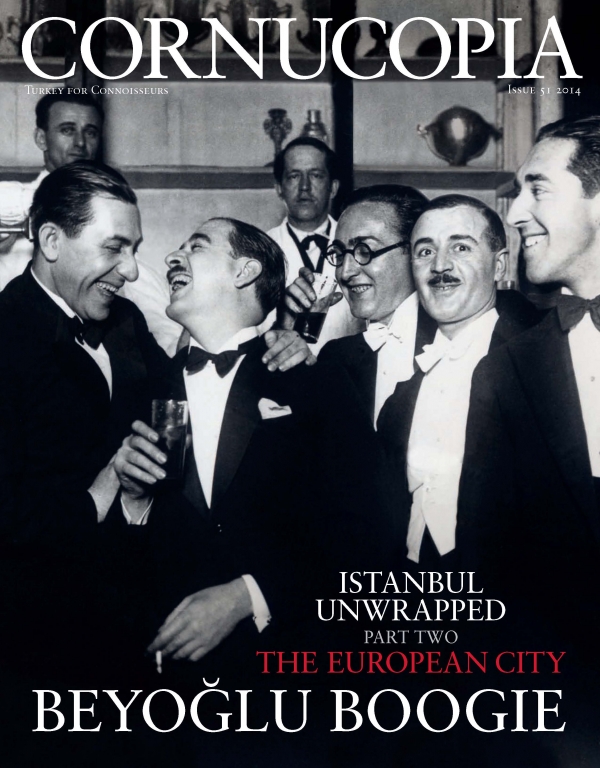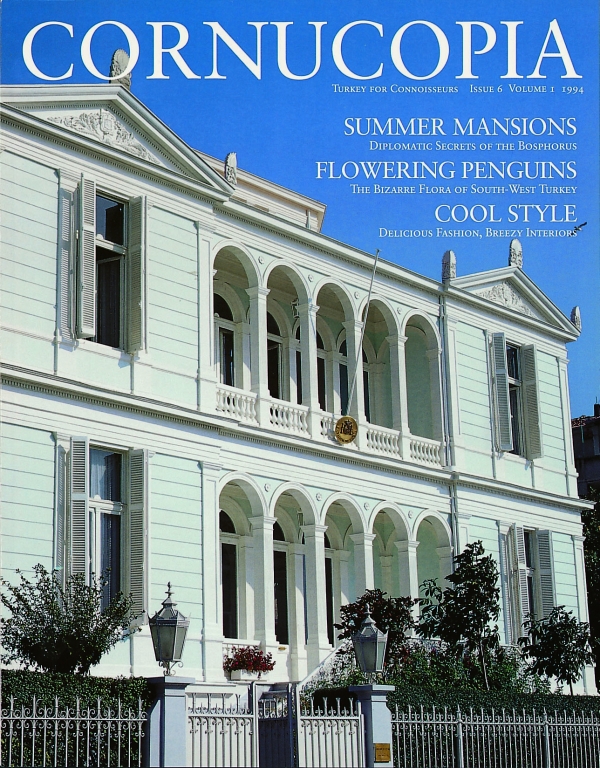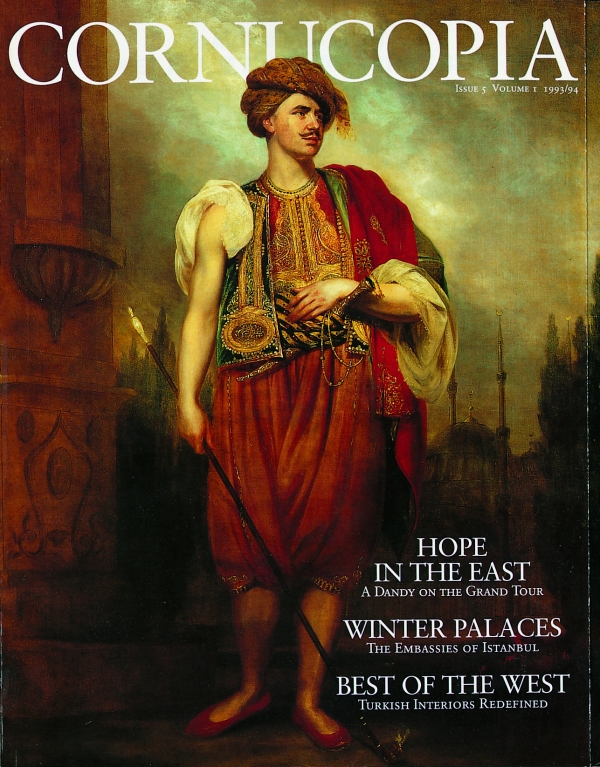Buy or gift a stand-alone digital subscription and get unlimited access to dozens of back issues for just £18.99 / $18.99 a year.
Please register at www.exacteditions.com/digital/cornucopia with your subscriber account number or contact subscriptions@cornucopia.net
Buy a digital subscription Go to the Digital EditionPatricia Daunt extols the palatial embassiess that adorn the heights of old Pera
Cosmopolitan, trendsetting, with distractions to suit almost every taste, 21st-century Beyoğlu holds an unusual extra to whet the enthusiasm of the most jaded tourist: the pleasure of seeking out the “winter embassies” so relished by the ambassadors and envoys to the Ottoman Porte. They are the grandest diplomatic buildings of any of the imperial capitals and, with the exception of the Italian, are all more-or-less 19th-century contemporaries. Extravagantly built, referred to as “palaces”, once endowed with prisons, chapels and throne rooms, they stand in their own grounds protected by high walls and fine gates. Demoted to consulates since the embassies transferred to Ankara, all but the “German Palace” are within a stone’s throw of the Grand’ Rue de Péra – or İstiklâl Caddesi, as it became in the 1920s.
The first ambassadors to the Porte lived in Galata, but bubonic plague and overcrowding led them to decamp outside the medieval walls to the vine-clad hills of Pera – today’s Beyoğlu – where the Venetians were the first to move in 1517, renting a wooden villa tucked into the hills below what is now İstiklâl Caddesi. The French soon followed, acquiring the estate next door and enjoying the same idyllic view overlooking the Seraglio and beyond to the Islands in the Sea of Marmara. A century later, the Dutch were the first nation to receive as a gift from the sultan a parcel of land on the Grand’ Rue itself.
Before the great fires of the early 19th century, which swept through Pera time and again, the finest embassy of all was that of the Swedes, standing on the Grand’ Rue. Some say that it was completed with monies sent to Istanbul by the Protestant faithful for the buying and freeing of Christian slaves. It was reduced to ashes in 1818, but its west-facing garden with its view over the Bosphorus remained, as it still does, to “heal the spirits”. Today’s charming Neoclassical 1870 building, by the Austrian architect Domenico Pulgher, is sheltered from the bustle of the street by walls and trees…
 Issue 51, Summer 2014
Istanbul Unwrapped: The European City and the Sultan’s New City
Issue 51, Summer 2014
Istanbul Unwrapped: The European City and the Sultan’s New City
With 19th-century Istanbul in thrall to the music of Italy, an extraordinary theatre was born, the creation of one rather ‘odd character’. Emre Aracı tells a tale of comedy and tragedy
Black musicians, White Russian princesses, Turkish flappers… During the Jazz Age, Beyoğlu was a ferment of modernity and decadence. By Thomas Roueché
For 700 years, the European quarter was home to Genoese, Jews, Greeks and many others. Norman Stone charts the district’s changing fortunes
Maureen Freely recalls the artists and writers who enlivened her childhood with their flamboyant bravado and unspoken sadness
In the very thick of the city, with its fret and fuss, belching traffic and urban sprawl, lies a glade scented with linden blossoms. Here the young Sultan Abdülmecid built a jewel of a palace, grand but tiny, which is still a green oasis and place of escape. By Berrin Torolsan
Until the 20th century, visitors would sail serenely into Istanbul to disembark opposite the Topkapi. After this spectacular start, reality would set in. By David Barchard
With its hundreds of different shapes, pasta is today one of the most widely consumed and enjoyed of all the staples
For more than two centuries the Ottomans were obsessed by the elegance of the tulip and grew over 3,000 varieties, each characterised by almond-shaped petals drawn out into an exaggerated taper.
Across the Golden Horn from the Topkapı and the bazaars is the European City, where fortunes have for centuries been made and lost.
As the old European quarters flourished in their seclusion, Sultan Abdülmecid had a dream – and expanded to the east
The Sakip Sabanci Museum has just celebrated 600 years of diplomatic relations between Poland and Turkey. Jason Goodwin finds deep-rooted affinities between the two countries
John Carswell introduces the mesmerising entries in this year’s Ancient and Modern Prize for original research
 Issue 51, Summer 2014
Istanbul Unwrapped: The European City and the Sultan’s New City
Issue 51, Summer 2014
Istanbul Unwrapped: The European City and the Sultan’s New City



Cornucopia works in partnership with the digital publishing platform Exact Editions to offer individual and institutional subscribers unlimited access to a searchable archive of fascinating back issues and every newly published issue. The digital edition of Cornucopia is available cross-platform on web, iOS and Android and offers a comprehensive search function, allowing the title’s cultural content to be delved into at the touch of a button.
Digital Subscription: £18.99 / $18.99 (1 year)
Subscribe now